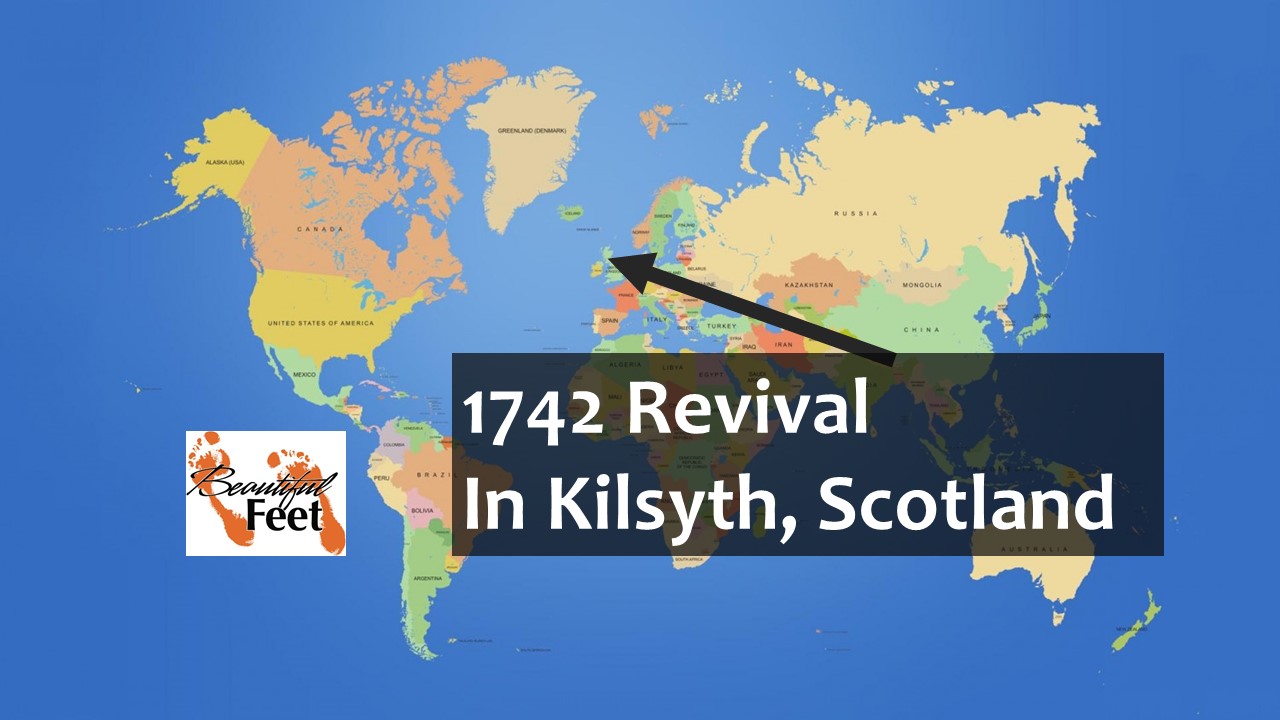
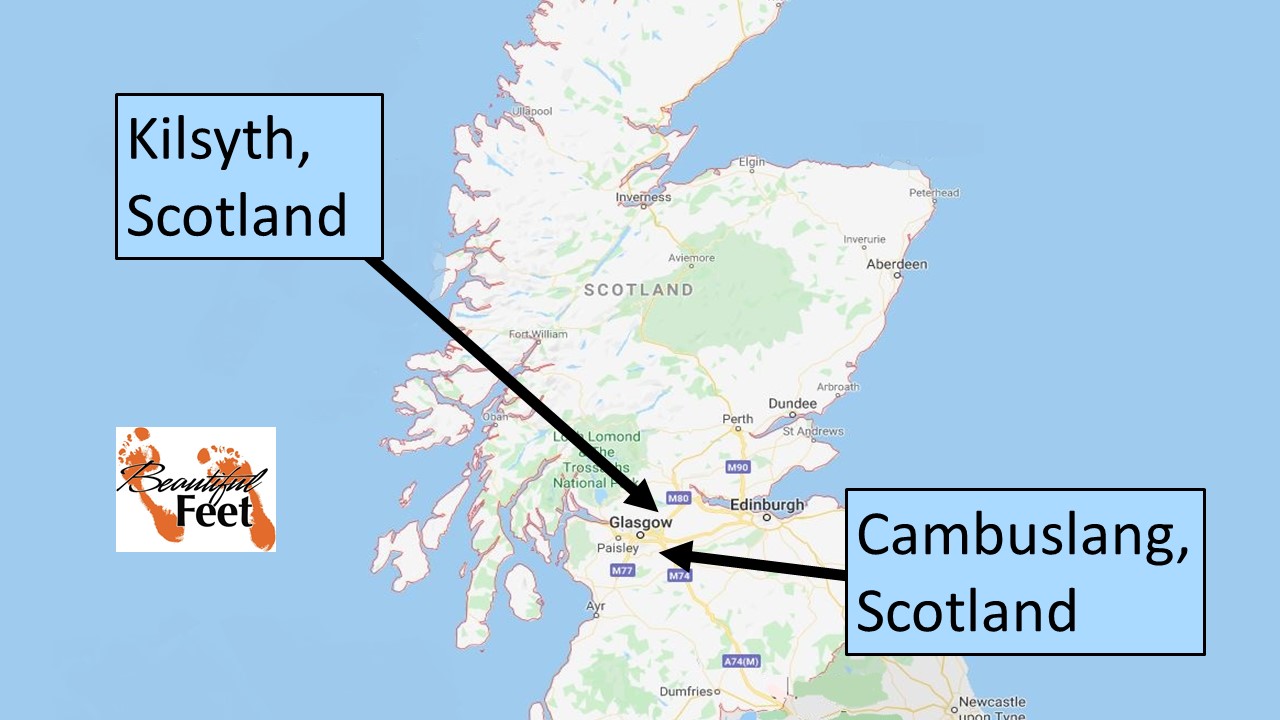
Conditions at Kilsyth
By 1742, James Robe had been ministering at the Kilsyth Church of Scotland for 30 years. During that time he had faced many discouragements:
► In 1733-1734, a “pluretic fever” claimed the lives of sixty from his congregation in the space of three weeks.
► On June 27, 1733, there was a severe rain and hailstorm, with hail 3” in size. It destroyed all the corn. Many homes were destroyed and cattle drowned. The greater calamity was that no one began seeking the Lord after it happened.
► A division in the church resulted in 12 families leaving.
► The area was struck with a famine, with many suffering at the point of death. None turned to God through this, pleading for mercy. When prosperity returned, it did not bring with it renewed thanksgiving to God.
► Even with the severe suffering of the community, the people were not spiritually moved. Instead of there being a turning to God for mercy and a lightening from their sufferings, Robe indicated that wickedness seemed to increase.
► People became indifferent and turned to drunkenness and other vices.
► Prayer groups declined to nothing.
► The spirit of formality seemed to prevail.
Extraordinary Prayer
James Robe then began to intercede more intently on behalf of his congregation and community, and to supplement his prayers with action. In 1740 he started a series of sermons about the born-again experience: the importance, the necessity, and the evidence of spiritual transformation.
Even with all his prayers and diligent teaching, he still was not seeing the results he had been anticipating.
Cambuslang Revival
In 1741-1742, a revival was underway in Cambuslang, Scotland. James Robe would frequently attend the services there, and assist the minister at that congregation by giving spiritual counsel to those recently converted.
Every time he returned to his own congregation after having visited Cambuslang, it was as if he had been “anointed with fresh oil” which strengthened his resolve to see revival happen in Kilsyth.
What Happened
The first evidence of change taking place at Kilsyth began at a prayer meeting, when a group of young ladies, ages 10-16, began to express their deeper longing for more of God.
A second event was a sermon from a Mr. Willison from Dundee, who had been at the Cambuslang Revival and was on his return home. Robe had asked him to preach, and that man’s sermon softened the hardened hearts of many in the congregation at Kilsyth.
The third event was on a Sunday in April, 1742, when James Robe was preaching. As he was reading the text for his sermon (Galatians 4:19), he was overwhelmed with tears before his congregation—evidence of God’s presence being in their midst.
The next Sunday, following Robe’s sermon, a lady on her way home from the church service became so overcome with the conviction of sin that she was “found in a field, crying out like the jailer, ‘what shall I do to be saved?’” She was brought back to the church and received the necessary counsel she needed from Robe, and she then experienced the assurance of her salvation.
In the month of May, five more people were saved, and there was great expectation that this was but the “mercy drops” prior to the refreshing rains of revival they had been praying so long for.
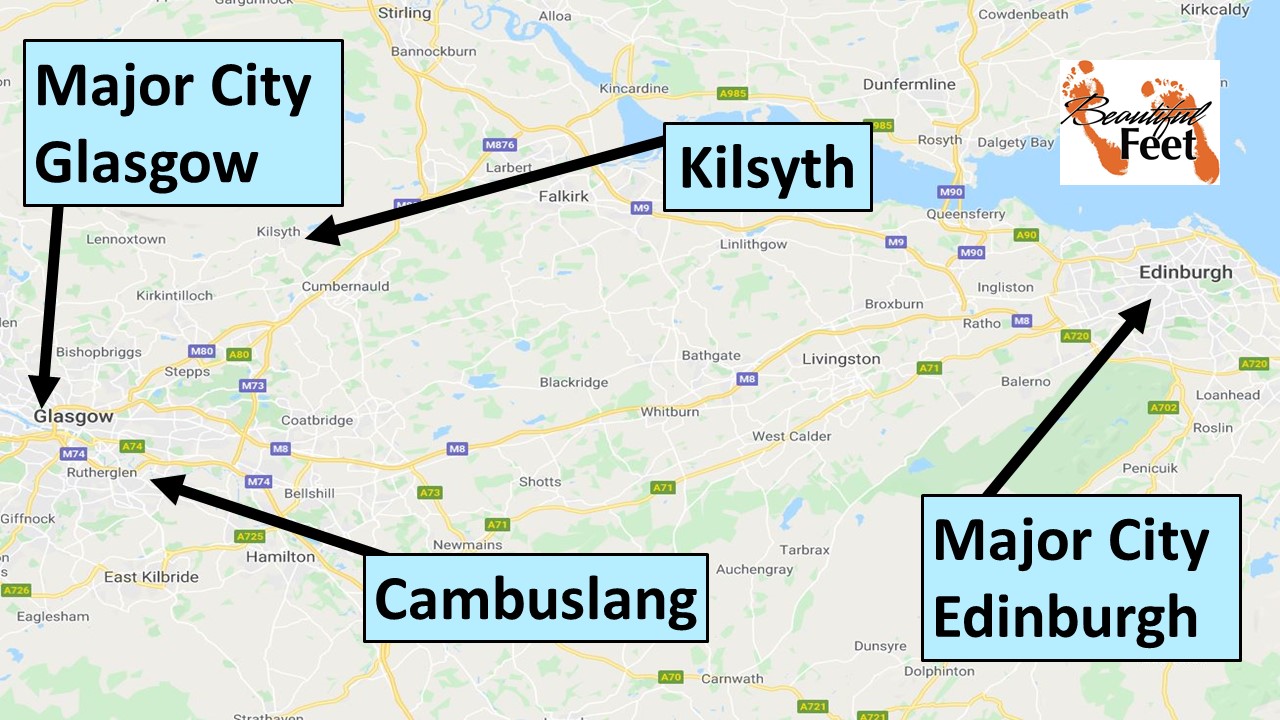
Location of Kilsyth, in reference to other major cities.
The Revival’s Influence Expands
During one of Robe’s sermon’s in mid-May, he testified of “an extraordinary power” that accompanied his sermon. The congregation began mourning deeply, with many crying out—“and these were not women, but some strong and stout-hearted young men.”
The custom of the time was for the minister to give immediate counsel to the newly converted following the service. So, after the dismissal, those who were under severe spiritual distress over the condition of their souls (over 30 of them), stayed behind in the church. Robe attempted to speak to them but could not be heard over their intense weeping and groaning. He then took them privately, one by one, into his office, and sent for John Oughterson, the minister in nearby Cumbernauld, to come and assist him.
The work of conversion went on, as on Monday of the following week a minister from a neighboring town was asked to speak, and people from the region came to participate. Ministers from the region were also on hand to assist Robe with giving counsel to the new converts, as 40 more were converted that week.
Hunger for the Word of God
As the revival’s influence spread, people were more desirous to hear teaching and preaching. It was decided that extra sermons would be given on Wednesdays, and there were often 2-3 sermons given on that day, while Mondays, Tuesdays, and Fridays were used for teaching and giving counsel to new converts and inquirers.
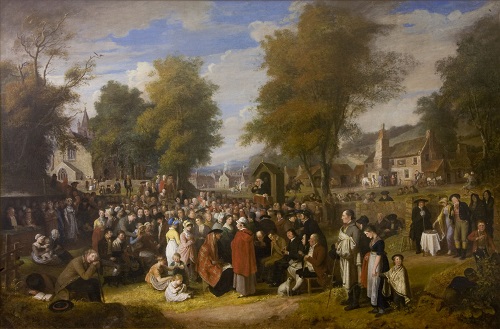
Holy Fair (communion event)
Communion Season
Communion preparation (holy fair) at this time was held from Thursday (fasting day) till Monday, giving a period of introspection prior to partaking of communion on Sunday. (This practice evolved into “camp meetings” in the United States.)
A Communion Season was conducted on the second Sunday of June 1742, and the results of God’s presence to convict of sin and produce conversions was so pronounced that another one was planned for the third Sunday in October.
The anticipation for the second Communion Season was so great that Robe had invited 11 other ministers to assist him.
The second Communion Season began on Thursday and continued till Tuesday morning. The Sunday service began at 8:30 a.m. and, without a pause, continued till 8:30 p.m. On Sunday preaching took place simultaneously in different locations by different ministers. Some preached in the church and others preached at different locations in the fields surrounding the church.
Robe testified that the majority of converts were severely convicted, with emotional outbursts,
like the awakened at the day of Pentecost, or like the convicted jailer at Philippi.
He also mentioned others, though fewer in number, who “were brought to Jesus in a more gentle and silent manner,” and who testified of their profession of faith without the emotional outbursts that others demonstrated.
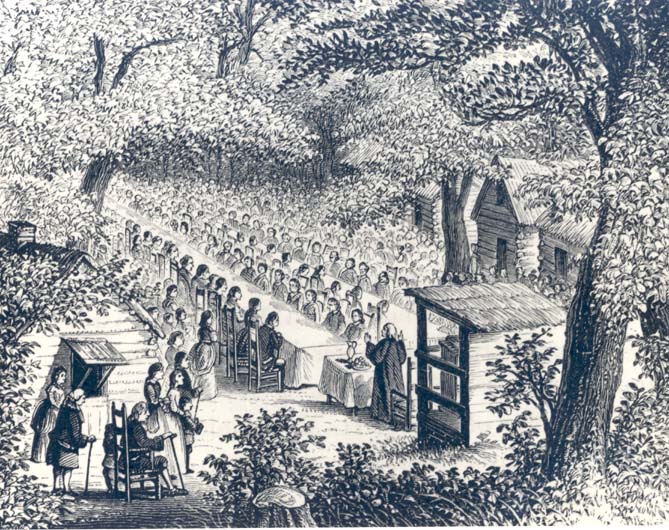
Communion Season
Results of the Revival
► Feuds and hatred between individuals were forgiven and laid aside.
► The thefts that were common before the revival became practically unheard of.
► Wrongs done to others were made right.
► There was an obvious transformation in the atmosphere of the church services, with much more attention and seriousness being demonstrated.
► The level of morality in the community was noticeably improved.
► Close to 100 years later (from 1832-1838), the minister at the Kilsyth church (William Burns Sr.) would tell and retell the story of what occurred at Kilsyth in 1742. This led their congregation to more intense prayer, and revival again broke out at Kilsyth in 1839.
Sources
► 1839 Kilsyth Revival by Beautiful Feet
► Evangelical Revivals in Scotland by Wikipedia
► Land of Many Revivals by Tom Lennie
► Narratives of the Extraordinary Work of the Spirit of God by James Robe
► Narratives of Revivals of Religion in Scotland, Ireland, and Wales by Anonymous
► Scotland saw His Glory: A History of Revivals in Scotland by Richard Owens
Return to List of Revival Stories
Chet & Phyllis Swearingen:
Office: (260) 920-8248
romans1015@outlook.com
Beautiful Feet
P.O. Box 915
Auburn, IN 46706

